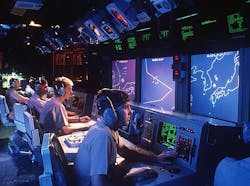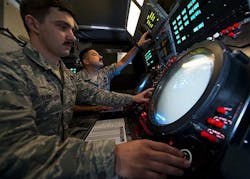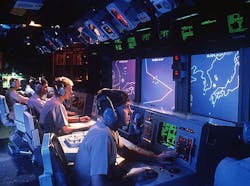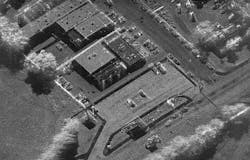Military radar market worth $13 billion by 2020
PUNE, India, 17 Feb. 2016. The global military radar market – including space-based, airborne, ground-based, and naval systems – is projected to grow from $11.02 billion in 2015 to $13.04 billion by 2020, representing a compound annual growth rate of 3.42 percent, according to analysts at MarketsandMarkets in Pune, India.
Increased demand for surveillance and weapon guidance application is the major driver for the military radars market over the globe, analysts reveal in MarketsandMarkets’ latest report, “Military Radar Market by Platform, Band Type, Application & Geography - Global Forecast to 2020.”
The ground-based radars segment is expected to be the major contributor to the overall military radars market. Ground-based radar systems: provide real-time information to military personnel; help locate unexploded ordinance and tunnels; detect movement near exterior walls, critical infrastructure, and buildings; and are used along with airborne, naval, and satellite platform radars for target integration. Current conflicts in Syria, Afghanistan, and the Crimean Peninsula are driving the demand for ground-based military radars, analysts say.
Weapon guidance systems rely on the tracking functions of military radar systems. Laser guidance, ground reference, and other systems used for weapon guidance use various types of radar, driving market growth. Military forces around the globe expect improvements in the accuracy and precision of military radars.
The Asia-Pacific region is expected to have the second-largest market share and highest growth rate in the global military radars market. Conflict over the disputed area of South China Sea is a major factor compelling the authorities to increase surveillance capabilities in the affected region. China, Taiwan, Vietnam, Malaysia, Brunei, and the Philippines have competing territorial and jurisdictional claims, particularly over rights to exploit the regions extensive reserves of oil and gas.
High growth in military expenditure and modernization of surveillance and battle systems is driving the radar market in India. For instance, the Indian Navy finalized the naval satellite for testing, prior to being shipped abroad and orbited on a non-Indian launch system, which is equipped with advanced radar systems.
The Brazilian Army is also spending on sensors, remote sensing, and command and control systems for defense, which is driving the radars market in the area.
The major players in the military radars market are: Lockheed Martin Corporation (U.S.), Northrop Grumman Corporation (U.S.), Raytheon Company (U.S.), Saab Group (Sweden.), and Thales Group (France), Airbus Group (Netherlands), BAE Systems (U.K.), General Dynamics Corporation (U.S.), Israel Aerospace Industries (IAI) (Israel), and Finmeccanica SpA (Italy).
The new report segments and analyzes the military radars market by platform (ground-based, naval-based, airborne, space-based), by band (X-band & Ku-band, L-band & S-band, other), by application (weapon guidance system, surveillance), by region (North America, Europe, Asia-Pacific, Middle East & Africa, RoW).
Radars play a vital role in the defense industry. Generally, the radar antennas mounted at airports or other ground stations are used to detect approaching enemy airplanes or missiles. For instance, the U.S. has a very elaborate Ballistic Missile Early Warning System (BMEWS) to detect incoming missiles.
Multifunctional radars and 3D drones are the upcoming technological advancements in surveillance industry that have huge potential to drive this market globally.
The ecosystem of the military radars market comprises defense establishments, aerospace industry, marine industry, and military radar manufacturers’ facilities among other. This report would help the military radar system suppliers, army, navy, air force, government and regulatory authorities to identify hot revenue pockets in this market.
Target Audience for this Report:
- Military Radar System Manufacturers
- Original Equipment Manufacturers (OEMs)
- Software Solution Providers
- Component Suppliers
- Aerospace & Defense Industry
- Ship, Defense, Automotive, and Aircraft Manufacturers
- Automotive Industry
- Critical Infrastructure
“Study answers several questions for the stakeholders, primarily which market segments to focus in next two to five years for prioritizing the efforts and investments”.
This research report categorizes the military Radar market into the following segments and subsegments:
Global Military Radars Market, By Band
- L & S Band
- X & Ku Band
- Other Band
Global Military Radars Market, By Platform
- Ground-based
- Naval-based
- Airborne
- Space-based
Global Military Radars Market, By Application
- Surveillance
- Weapon Guidance
Global Military Radars Market, By Geography
- North America
- U.S.
- Canada
- Asia-Pacific
- China
- India
- Japan
- South Korea
- Australia
- Europe
- Russia
- France
- U.K.
- Germany
- Middle East & Africa
- Saudi Arabia
- UAE
- Israel
- RoW
- Brazil
- Other



